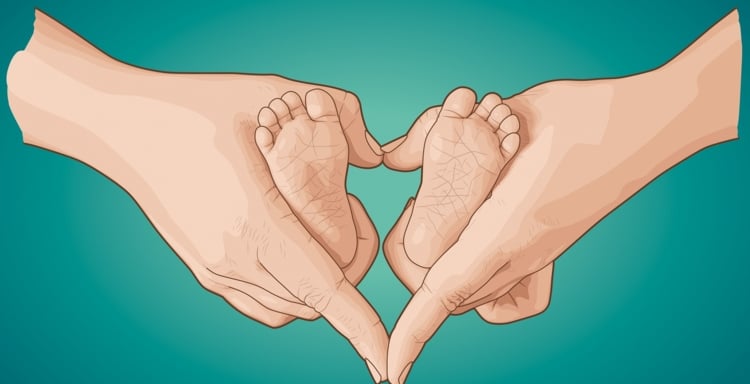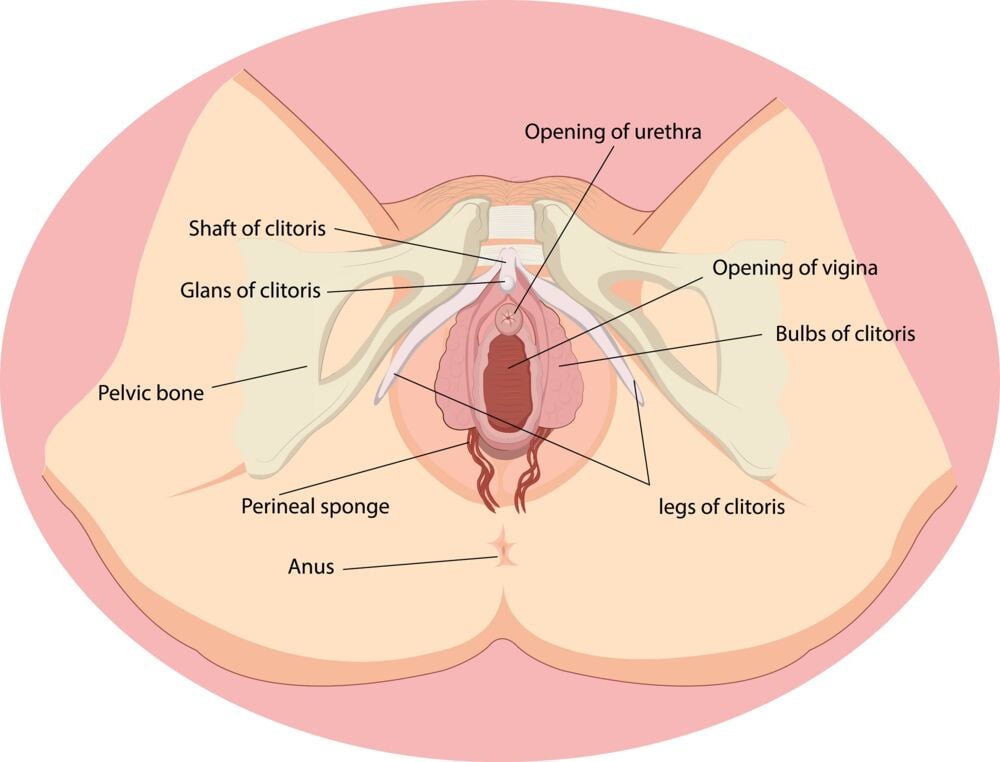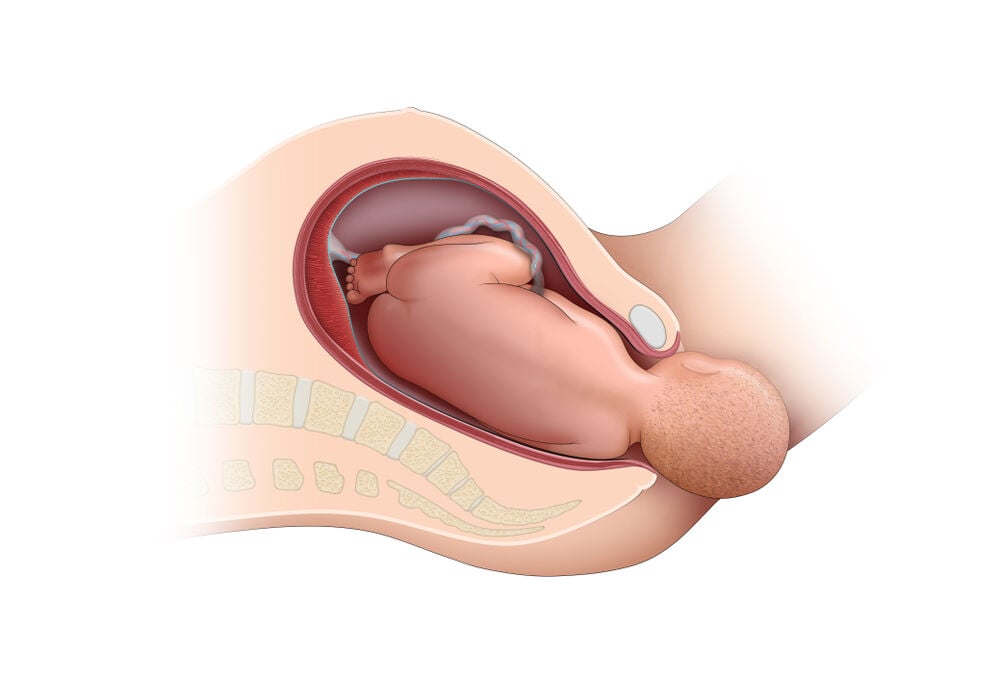Natural changes after childbirth affect your whole body, and the vagina is no exception.
-
Tracking cycle
-
Getting pregnant
-
Pregnancy
-
Help Center
-
Flo for Partners
-
Anonymous Mode
-
Flo app reviews
-
Flo Premium New
-
Secret Chats New
-
Symptom Checker New
-
Your cycle
-
Health 360°
-
Getting pregnant
-
Pregnancy
-
Being a mom
-
LGBTQ+
-
Quizzes
-
Ovulation calculator
-
hCG calculator
-
Pregnancy test calculator
-
Menstrual cycle calculator
-
Period calculator
-
Implantation calculator
-
Pregnancy weeks to months calculator
-
Pregnancy due date calculator
-
IVF and FET due date calculator
-
Due date calculator by ultrasound
-
Medical Affairs
-
Science & Research
-
Pass It On Project New
-
Privacy Portal
-
Press Center
-
Flo Accuracy
-
Careers
-
Contact Us
What Happens to Your Vagina After You Give Birth: 8 Things New Moms Should Know


Every piece of content at Flo Health adheres to the highest editorial standards for language, style, and medical accuracy. To learn what we do to deliver the best health and lifestyle insights to you, check out our content review principles.
What concerns do new mom have?
After delivering their baby, most moms want to get back to their normal routine, including having sex with their partners. These common questions might be on their mind:
- Does the vagina remain the same after childbirth?
- Is it true that after delivery the vagina becomes loose?
- What happens to my body after delivery?
- How do I tighten my vagina after childbirth?
It’s totally normal to want to make sure that everything down there is okay before having intercourse. So, let’s look at some answers.
How the vagina supports birth

When a baby is ready for birth, a cascade of hormonal reactions happens, releasing estrogen and relaxin, along with other important substances.
Estrogen increases blood flow to the vagina, which keeps the vaginal tissue elastic. Estrogen allows the vagina to expand and contract. So, when a person gives birth, the vaginal walls can stretch to allow the child to pass through.
Relaxin (as the name suggests) relaxes the pelvic ligaments and softens and widens the cervix to allow the baby to exit the womb. These two hormones make a vaginal birth possible.
Take a quiz
Find out what you can do with our Health Assistant
What happens to your vagina when you give birth
- Soreness in the vaginal area
- Vaginal dryness
- Vaginal laxity (looseness)
If you have a vaginal delivery and an intact perineum

Most people have a swollen vagina after birth because of all the stretching and some superficial tears. Even if your perineum is not affected by the delivery, you’ll still experience some soreness and tenderness from the stretching.
You may continue to experience this vaginal discomfort for a few weeks, but it should fade over time. You can ease the pain and soreness by placing an ice pack on the area and sitting on a pillow. If you feel tingling and stinging while urinating, you can run warm water over your perineum. Also, you may want to monitor the regularity of your stool to avoid additional discomfort.
If you have a vaginal delivery and a torn perineum
Perineum tears are natural tears that occur during childbirth. The perineum is the soft tissue between the anus and the vaginal opening. When the perineum undergoes too much strain, it tears. This can happen if the baby’s head is larger than the vaginal opening and the vaginal walls can’t stretch enough. So, it’s totally normal to experience soreness, discomfort, or swelling after a tear or episiotomy.
For an episiotomy, a health care provider makes a small surgical incision in the perineum to increase the size of the opening. This allows the baby to pass through more easily.
Perineum tears can take up to 14 days to heal after childbirth. A health care provider may prescribe antibiotics and painkillers.
It is important to keep the area clean, which can prevent infection. Wash the wound with warm water and pat the area dry after each visit to the toilet.
Some tears may be superficial and heal on their own, but others require treatment. There are four types of perineum tears:
- First-degree – Skin tears of the perineum or vaginal mucosa with no muscle damage. These tears may not require stitches, and they heal on their own in a few weeks.
- Second-degree – Tears extend to the muscles of the vagina and perineum. These tears always require stitches, and they heal within a couple of weeks.
- Third-degree – Damage to the anal internal and external muscles. This kind requires a surgical repair using anesthesia. The healing process may take more than a few weeks.
- Fourth-degree – Damage to the anal sphincter complex and lacerations that extend to the rectum or anal canal. This type requires stitches in the operating room with the use of anesthesia and specialized care.
If you have a cesarean delivery
Сhanges in the vagina after a cesarean may differ from those that follow a vaginal delivery.
However, people who’ve undergone a cesarean delivery will also experience some vaginal dryness, which is due to the hormonal effects of the postpartum period. Although you may have an abdominal scar, the vaginal recovery process is quicker, as the area has sustained less damage.
How to take care of your vagina after giving birth
Proper care of the vagina after a natural birth is extremely important, especially if you have vaginal stitches.
Let's take a look at some vaginal care steps to do and avoid after childbirth.
Dos
- Exercise
Exercise after childbirth can boost your mood and help tone the muscles of the whole body. Once your doctor gives you the all-clear, you can start with simple exercises such as walking 10 minutes a day. Aim for 150 minutes per week of moderate-intensity exercise, but keep it light and simple.
Also, you can exercise the pelvic floor by doing Kegels. These movements help tone your vaginal muscles and the pelvic floor, restoring their strength. These exercises also help prevent postpartum urinary incontinence (involuntary urine leakage).
- Clean with water
When you take a bath or shower, stick to gentle soaps. Also, use warm water to clean your vaginal area after visiting the toilet. Instead of wiping with toilet tissue, which can scratch, use a peri-wash squirt bottle to direct warm water around your vaginal area. Aim the bottle from front to back and then dry the area with a cotton towel.
- Try cold therapy
To alleviate the pain and soreness, place an ice pack or cold compress on the vaginal area for about 10–20 minutes. This can be repeated several times a day if necessary. It’s most effective in the first 72 hours after delivery. You can either wrap ice in a thin, clean cloth or purchase cold packs.
- Take warm sitz baths
Instead of showers, try warm sitz baths. Sitting in warm, shallow water can help relieve soreness. After checking with your midwife or doctor, you can also add oils that have pain-reducing and antiseptic properties, such as lavender and chamomile, for relief. These baths offer a great way to relax tired or aching muscles.
- Go herbal
If you’re experiencing an illness or infection, using herbs can alleviate some symptoms. Make sure to check with your health care provider first, as they can advise you on potential allergies or breastfeeding restrictions.

Don'ts
- Avoid tampons, as they increase your risk of infection. Instead, use maternity pads. These sanitary pads are longer, softer, and much more absorbent than standard ones. Change the pads frequently to avoid any bacterial buildup — every one to two hours during the first several days and every three to four hours after that.
- Avoid using body soaps or shower gels that contain harsh chemicals or scents when showering. Stick to water to clean any sensitive areas.
- Do not wipe with toilet paper after using the bathroom as this may aggravate the pain and soreness around your vaginal area. Use warm water to clean yourself and pat dry with cotton towels.
- Avoid wearing tight clothes. Opt for looser underwear made from natural materials.
- Don’t use any lotions or creams that haven’t been approved by your health care provider.
- Do not ignore your pain, especially if it starts suddenly, persists for a long time, or increases.
How soon will the vagina get back to normal?

For a vaginal birth, most people take about six weeks to recover. People who experienced perineum tears often have a longer recovery time. In general, your body knows how to heal, especially with these comfort tips. When possible, take time to relax, maintain a healthy diet, exercise, and enjoy spending time with your new baby.


Hey, I'm Anique
I started using Flo app to track my period and ovulation because we wanted to have a baby.


The Flo app helped me learn about my body and spot ovulation signs during our conception journey.


I vividly
remember the day
that we switched
Flo into
Pregnancy Mode — it was
such a special
moment.
Real stories, real results
Learn how the Flo app became an amazing cheerleader for us on our conception journey.




